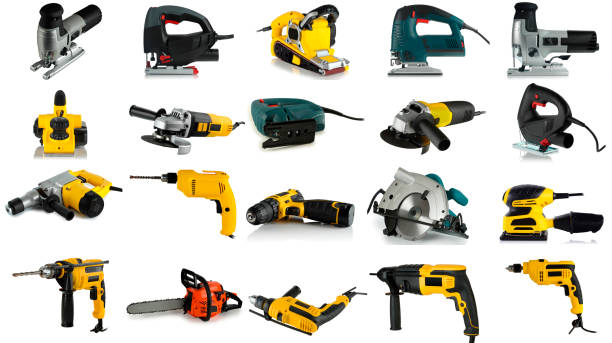
Whether you’re a seasoned pro or new to the world of power tools, safety should always be your top priority. In this comprehensive toolbox talk, we’ll delve into the hazards of power tools and offer essential tips for staying safe on the job. So, let’s jump right in!
Understanding the Hazards of Power Tools: Electrical Shocks, Burns, and Falls
When it comes to power tools, there are several dangers that users should be aware of. Among the most serious hazards are electrical shocks, burns, and falls. Electric shocks can cause various injuries, some of which we’ll discuss later on. They can also lead to falls, especially if the user is working on a ladder or elevated surface. To prevent these hazards, it’s crucial for workers to follow certain precautions.
General Precautions for Power Tool Safety
To minimize the risks associated with power tools, workers should adhere to the following general precautions:
- Choose the right power tool: Opt for tools with a three-wire system and ground, double insulation, or low voltage/battery power, with industrial type. Be sure to check the ground continuity for three-wire cords.
- Handle cords with care: Never carry an electric tool by the cord, and avoid pulling the cord to disconnect it from the receptacle. Keep cords away from heat, water, oil, and sharp edges.
- Disconnect tools when not in use: Unplug tools when they’re not being used, before servicing or cleaning, and when changing accessories like blades, bits, and cutters.
- Keep a safe distance: Ensure that people not involved in the work stay at a safe distance from the work area.
- Secure your work: Use clamps or a vise to hold your work in place, and operate power tools with both hands.
- Prevent accidental starting: Don’t hold your finger on the switch button while carrying a plugged-in tool.
- Maintain your tools: Keep tools sharp and clean for optimal performance, and follow user manual instructions for lubricating and changing accessories.
- Stay balanced and steady: Maintain good footing and balance when using power tools.
- Wear proper PPE: Use the appropriate personal protective equipment (PPE) for the task, and avoid loose clothing or jewelry that can get caught in moving parts.
- Remove damaged tools from use: Tag damaged portable electric tools with a “Do not use” label and remove them from circulation.
- Avoid damp or wet locations: Don’t use electric tools in areas with moisture or standing water.
- Illuminate your work area: Keep workspaces well-lit when operating electric tools.
- Minimize tripping hazards: Ensure that cords and extensions don’t present a tripping hazard.
Injuries Caused by Electric Shocks: What You Need to Know
Now that we’ve covered the general precautions for power tool safety, let’s take a closer look at the injuries that can result from electric shocks. These injuries can range from minor to severe and include:
- Burns: Electrical burns can occur at the point of contact with the electric current and can cause significant damage to the skin and underlying tissues.
- Cardiac arrest: An electric shock can interfere with the normal electrical activity of the heart, leading to cardiac arrest.
- Muscle, nerve, and tissue damage: Electric shocks can cause damage to muscles, nerves, and other tissues, resulting in pain, numbness, or weakness.
- Respiratory arrest: In some cases, an electric shock can affect the muscles that control breathing, leading to respiratory arrest and the inability to breathe.
- Ventricular fibrillation: Electric shocks can cause the heart to beat in an uncoordinated manner, known as ventricular fibrillation, which can be life-threatening.
FAQs: Power Tool Safety
Here are some frequently asked questions about power tool safety:
Q: What should I do if I experience an electric shock while using a power tool?
A: If you experience an electric shock, immediately let go of the tool and seek medical attention. Even if the shock seems minor, it’s essential to get checked out by a healthcare professional, as some injuries may not be immediately apparent.
Q: Can I use a power tool while standing on a wet or damp surface?
A: No, using electric tools on wet or damp surfaces can increase the risk of electric shock. Always ensure that your work area is dry before using power tools.
Q: How can I prevent cords from becoming a tripping hazard?
A: Keep cords neatly coiled or secured to prevent them from becoming tangled or stretched across walkways. Use cord covers or cable organizers to keep cords out of high-traffic areas.
Conclusion: Stay Safe and Informed
In conclusion, understanding the hazards of power tools is essential to staying safe on the job. By observing the general precautions outlined in this toolbox talk, you can minimize risks and prevent accidents. Always stay vigilant and prioritize safety when using power tools, and encourage your colleagues to do the same. Together, we can create a safer work environment for everyone.
